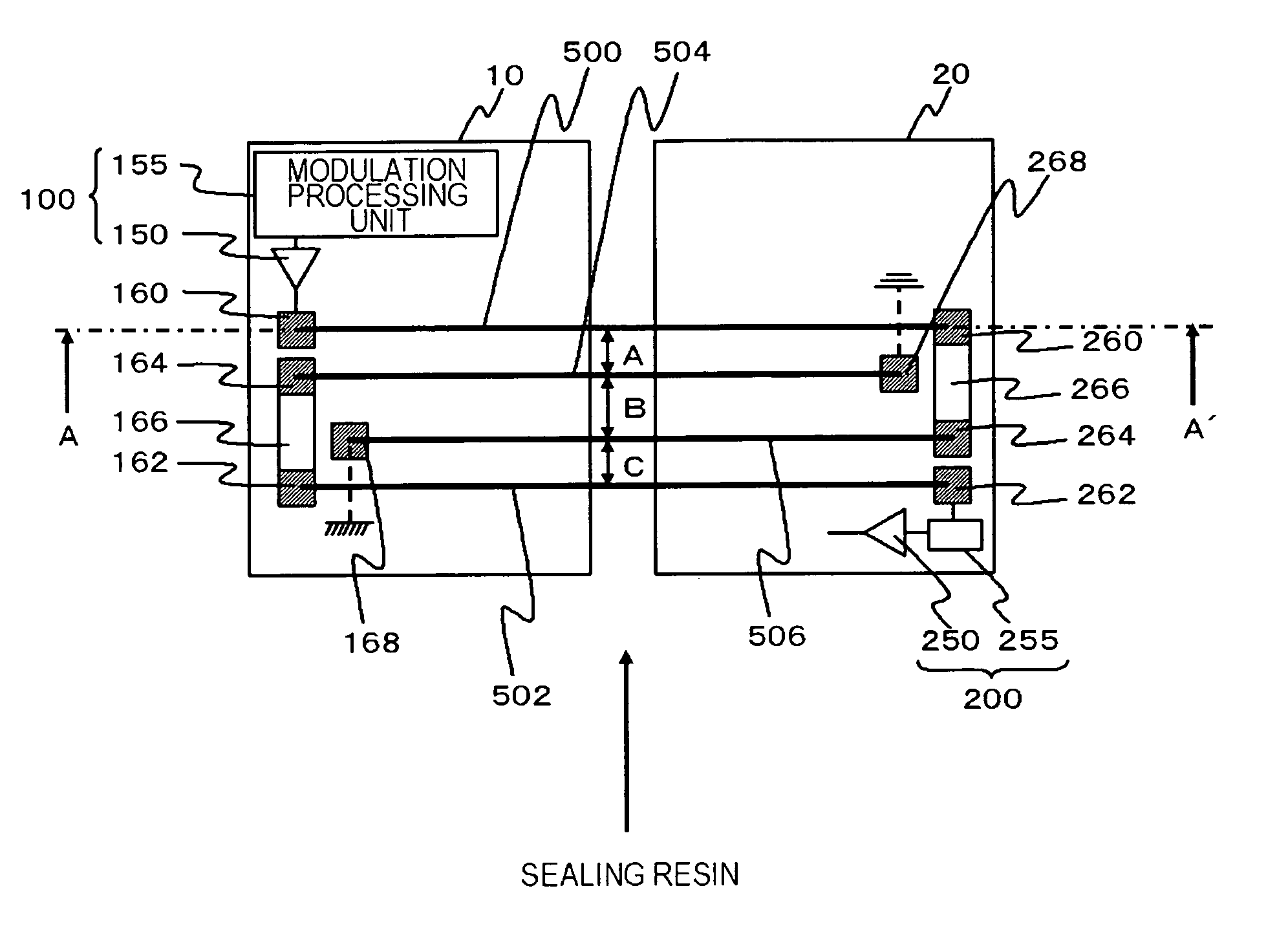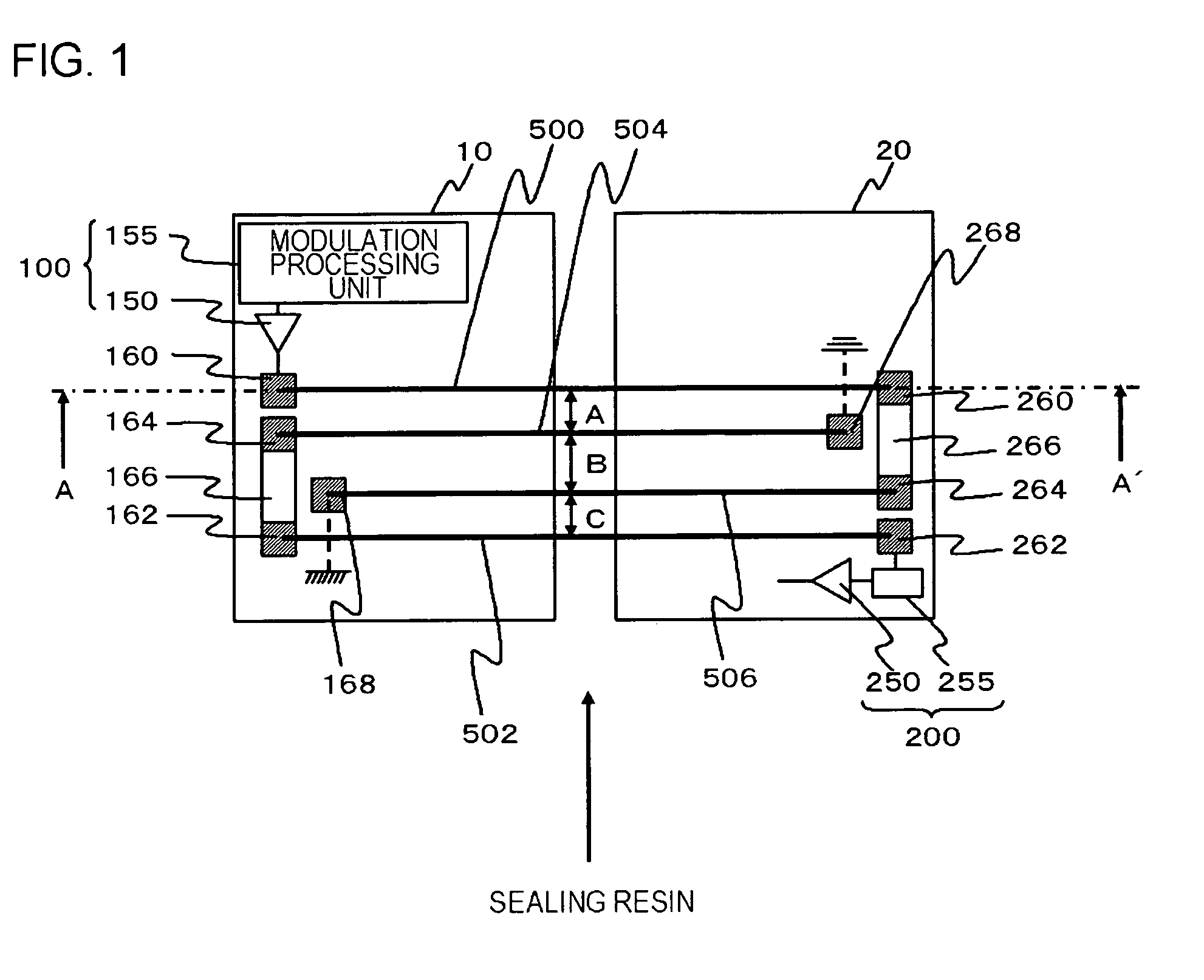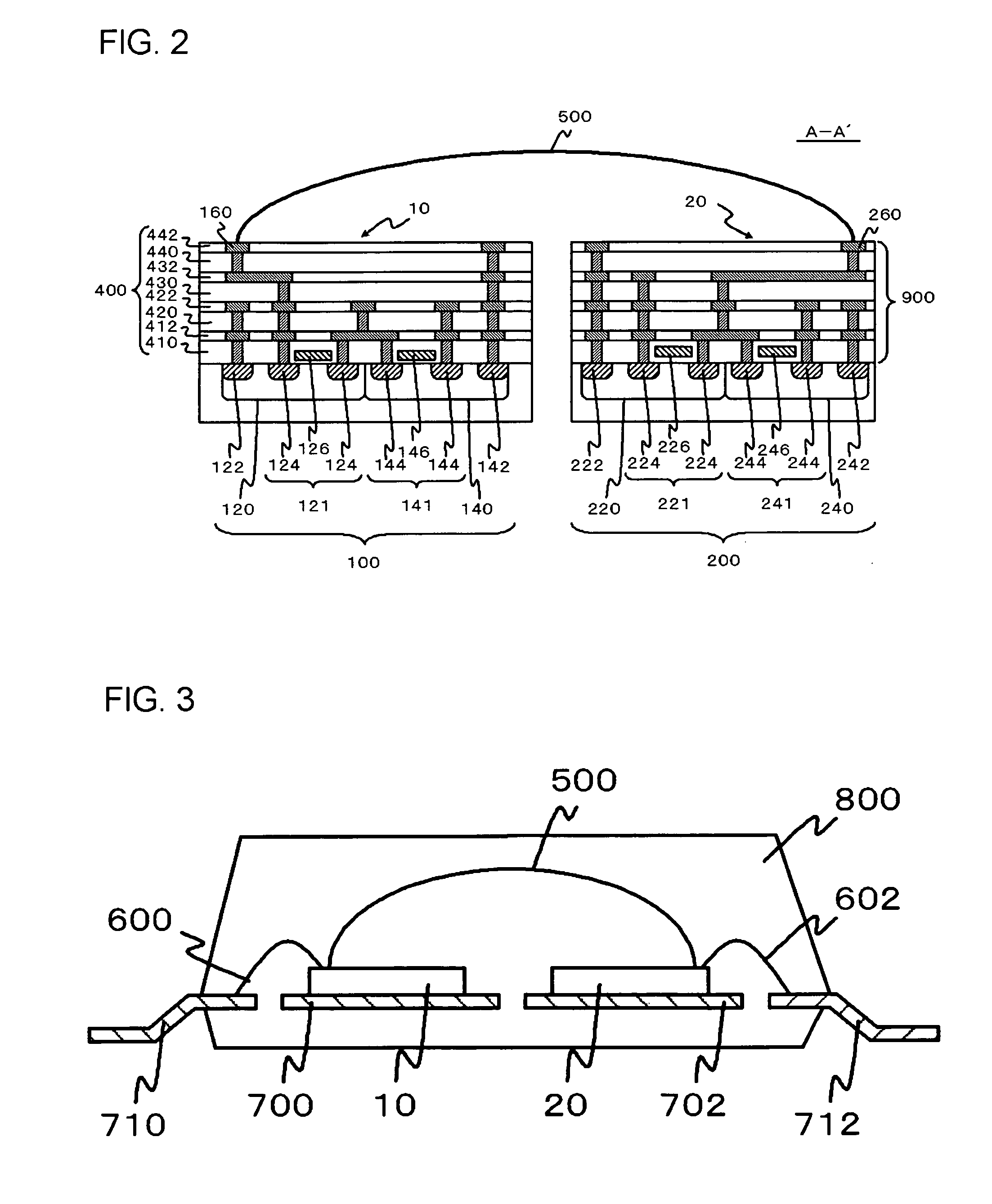Semiconductor device
- Summary
- Abstract
- Description
- Claims
- Application Information
AI Technical Summary
Benefits of technology
Problems solved by technology
Method used
Image
Examples
first embodiment
[0022]FIG. 1 is a schematic plan view showing the structure of a semiconductor device according to a first embodiment. This semiconductor device includes a first semiconductor chip 10 as a first region, a second semiconductor chip 20 as a second region, a first inductor, a second inductor, a first bonding wire 500, and a second bonding wire 502.
[0023]The first semiconductor chip 10 includes a transmission circuit 100, a first connecting terminal 160, and a second connecting terminal 162. The second semiconductor chip 20 is placed alongside the first semiconductor chip 10, and has a reference potential isolated from the first semiconductor chip 10. The second semiconductor chip 20 includes a reception circuit 200, a third connecting terminal 260, and a fourth connecting terminal 262. The first inductor is connected to the transmission circuit 100. The second inductor is connected to the reception circuit 200, and is inductively coupled to the first inductor. At least part of the firs...
second embodiment
[0049]FIG. 4 is a schematic plan view showing the structure of a semiconductor device according to a second embodiment. This semiconductor device is the same as the semiconductor device according to the first embodiment, except that each of the first bonding wire 500, the second bonding wire 502, the third bonding wire 506, and the fourth bonding wire 504 of the first embodiment is divided into a plurality of bonding wires.
[0050]More specifically, a first connecting terminal 160, a second connecting terminal 162, a fifth connecting terminal 164, and a sixth connecting terminal 168 are provided on a side of a first semiconductor chip 10, with the side facing a second semiconductor chip 20. A third connecting terminal 260, a fourth connecting terminal 262, a seventh connecting terminal 264, and an eighth connecting terminal 268 are provided on a side of the second semiconductor chip 20, with the side facing the first semiconductor chip 10. The first connecting terminal 160 is not conn...
third embodiment
[0067]FIG. 5 is a schematic plan view of a semiconductor device according to a third embodiment. FIG. 6 is a cross-sectional view of the semiconductor device, taken along the line B-B′ of FIG. 5. FIG. 5 is equivalent to FIG. 1 illustrating the first embodiment, and FIG. 6 is equivalent to FIG. 2 illustrating the first embodiment. The semiconductor device according to this embodiment is the same as the semiconductor device according to the first embodiment, except that each of the components formed in the first semiconductor chip 10 and each of the components formed in the second semiconductor chip 20 are formed on a same SOI substrate 101.
[0068]More specifically, each of the components formed in the first semiconductor chip 10 is formed in a first region 12, and each of the components formed in the second semiconductor chip 20 is formed in a second region 22. The first region 12 and the second region 22 have reference potential isolated from each other by an insulating layer 104 tha...
PUM
 Login to View More
Login to View More Abstract
Description
Claims
Application Information
 Login to View More
Login to View More - R&D
- Intellectual Property
- Life Sciences
- Materials
- Tech Scout
- Unparalleled Data Quality
- Higher Quality Content
- 60% Fewer Hallucinations
Browse by: Latest US Patents, China's latest patents, Technical Efficacy Thesaurus, Application Domain, Technology Topic, Popular Technical Reports.
© 2025 PatSnap. All rights reserved.Legal|Privacy policy|Modern Slavery Act Transparency Statement|Sitemap|About US| Contact US: help@patsnap.com



